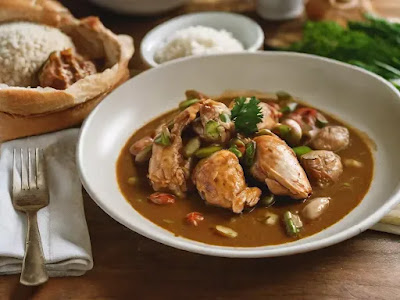Journey to the Root of Vietnam Cuisine
Vietnam History
Vietnam has a long and complex history, shaped by various indigenous cultures and external influences. It is challenging to attribute the founding of Vietnam to a specific individual or group. The region now known as Vietnam gradually took shape through the integration of ancient kingdoms and tribes, evolving over centuries.
 |
| Vietnam Illustration Drawing by @iCok |
Ancient Vietnamese kingdoms, such as Van Lang and Au Lac, emerged during the Bronze Age. These early societies laid the foundations for the development of Vietnamese civilization. Over time, there were interactions and conflicts with neighboring kingdoms like Funan, Champa, and Chinese dynasties.
In terms of recorded history, the region was under Chinese domination for around a thousand years, from 111 BC to AD 938. During this period, Vietnamese culture and identity flourished, combining influences from Chinese civilization with indigenous traditions. Notably, it was during the early centuries of Chinese rule that the concept of "Vietnam" as a distinct geographic and cultural entity began to emerge.
Cuisine Influence
Vietnamese cuisine has captivated the taste buds of people from all over the world, but it was France that played a significant role in bringing Vietnamese culinary traditions to the attention of the international community.
 |
| Feast with Various Cuisines in the Royal Vietnamese Empire |
During the period of French colonial rule in Vietnam from the late 19th century to the mid-20th century, French influences deeply permeated Vietnamese society, including its cuisine. The French introduced new ingredients, culinary techniques, and styles of cooking that mingled with traditional Vietnamese flavors and cooking methods. This fusion gave birth to a unique culinary tapestry known as "Vietnamese-French" or "Franco-Vietnamese" cuisine.
Monsieur Henri
Meet Monsieur Henri, a passionate and adventurous Frenchman with a discerning appetite and an insatiable curiosity for the flavors of the world. In his pursuit of gastronomic exploration, he set sail for the distant lands of Vietnam.
As Monsieur Henri disembarked on the shores of Vietnam, he was immediately entranced by the vibrant markets teeming with exotic herbs, fragrant spices, and an array of colorful ingredients he had never encountered before. The bustling streets of Hanoi and the floating markets of the Mekong Delta welcomed him with open arms, inviting him to dive into the rich tapestry of Vietnamese cuisine.
Driven by a desire to truly understand this new culinary realm, Monsieur Henri immersed himself in the local culture. He ventured into traditional Vietnamese kitchens and learned from skilled home cooks, gleaning their age-old techniques for crafting delicate rice paper rolls, simmering sumptuous broths, and coaxing the flavors of lemongrass, fish sauce, and exotic tropical fruits into harmonious existence.
Inspired by the interplay of fragrant Vietnamese dishes and the techniques he had acquired from his own French culinary heritage, Monsieur Henri began to experiment. He fused classic French methods with Vietnamese ingredients, creating a culinary dialogue that would forever etch the foundations of Vietnamese-French cuisine.
Word of Monsieur Henri's creations spread throughout the colonial community, inciting curiosity and envy among his compatriots. Soon, French colonial elites and expatriates clamored to taste his innovative dishes, relishing every marriage of flavors that danced upon their palates.
Monsieur Henri's efforts not only expanded the gastronomic horizons of his fellow colonial settlers but also brought Vietnamese cuisine to the attention of the wider world. Books and journals chronicling his culinary adventures in Vietnam were published, further exciting the imaginations of distant lands.
Today, the legacy of Monsieur Henri lives on as Vietnamese-French cuisine continues to enchant food enthusiasts and celebrate the harmonious blending of traditional Vietnamese flavors and French culinary techniques. His journey stands as a testament to the power of seeking new flavors and embracing cross-cultural culinary experiences.
Here is a list of some popular and delicious Vietnamese dishes for you to explore:
- Pho: A traditional Vietnamese soup with flavorful broth, rice noodles, and various herbs, usually served with beef or chicken.
- Banh Mi: A French-inspired Vietnamese sandwich with a crusty baguette, filled with a combination of meats (such as pork or grilled chicken), pickled vegetables, herbs, and sauces.
- Bun Cha: Grilled pork and rice vermicelli noodles served with fresh herbs, lettuce, and a tangy dipping sauce.
- Com Tam: A plate of broken rice topped with grilled meats (commonly grilled pork chop or shredded pork), pickles, and a fried egg.
- Goi Cuon: Fresh spring rolls packed with shrimp, pork, vermicelli noodles, and fresh herbs, served with peanut dipping sauce.
- Cha Ca: A Hanoi specialty consisting of grilled fish marinated in turmeric, dill, and galangal, served with vermicelli noodles, peanuts, and herbs.
- Banh Xeo: Savory Vietnamese pancake made with rice flour and turmeric, filled with shrimp, pork, bean sprouts, and herbs, and wrapped in lettuce.
- Ca Kho To: Caramelized fish cooked in a clay pot with a flavorful sauce made from fish sauce, sugar, and other aromatics.
- Canh Chua: Sour soup typically made with fish, tomatoes, tamarind, pineapple, and fragrant herbs, offering a perfect balance of sweet, sour, and savory flavors.
- Chao Ga: Vietnamese chicken rice congee, comforting and nourishing with tender shredded chicken, rice, and garnishes like ginger and cilantro.
- Banh Cuon: Steamed rice rolls filled with ground pork, mushrooms, and minced shallots, typically served with nuoc cham dipping sauce.
- Goi Ga: Refreshing Vietnamese chicken salad with poached chicken, cabbage, carrots, herbs, and a zesty dressing.
- Mien Ga: Chicken glass noodle soup made with tender chicken, silky mung bean noodles, and fragrant broth.
- Banh Canh: Thick, chewy rice noodles served in a savory broth with various toppings like seafood or pork.
- Ca Phe Trung: Traditional Vietnamese egg coffee, prepared with a rich blend of coffee and creamy whipped egg yolks.
- Banh Da Lon: Steamed layer cake made with mung bean paste and coconut milk, resulting in a unique texture and taste.
- Nem Ran: Crispy fried spring rolls, filled with seasoned ground pork, shrimp, and vegetables.
- Rau Muong Xao Toi: Stir-fried water spinach with garlic, offering a delightful blend of crunch and fragrant flavors.
- Banh Tet: A festive Vietnamese rice cake made of glutinous rice, filled with mung bean paste and pork, wrapped in banana leaves.
- Che: Vietnamese sweet dessert soup, with a variety of ingredients like beans, jellies, and fruits in a sweet coconut milk broth.
- Banh Gio: Pyramid-shaped savory rice dumplings wrapped in banana leaves, filled with seasoned ground pork and mushrooms.
- Bun Bo Hue: A spicy beef noodle soup originating from the city of Hue, featuring thinly sliced beef, pork, and a flavorful, slightly spicy, lemongrass-infused broth.
- Ca Tim Kho To: Braised eggplant cooked with a savory sauce made from garlic, fish sauce, sugar, and soy sauce, creating a dish with rich flavors and melt-in-your-mouth texture.
- Xoi Ga: Fragrant sticky rice topped with savory shredded chicken, crispy fried shallots, and a drizzle of soy sauce.
- Nom Du Du: Green papaya salad with crunchy julienned papaya, pickled carrots, peanuts, herbs, and a tangy dressing.
- Bo Kho: Vietnamese beef stew simmered with spices like star anise and lemongrass, creating a warming and robustly flavored dish.
- Banh Bao: Fluffy steamed buns filled with a savory mixture of ground pork, mushrooms, and eggs.
- Kem Flan: A silky smooth Vietnamese version of crème caramel, often infused with flavors like pandan or coffee, creating a luscious and creamy dessert.
- Banh Tom: Crispy battered sweet potato and shrimp fritters, typically served with a tangy dipping sauce.
- Cha Ca Thang Long: Hanoi-style turmeric fish served with dill, peanuts, rice noodles, and a variety of accompaniments, allowing you to customize each bite to your liking.
- Thit Kho: Braised caramelized pork belly with eggs, cooked in a flavorful mixture of fish sauce, coconut water, and spices.
- Nem Nuong: Grilled pork sausage, savory and slightly sweet, often served with a platter of fresh herbs, rice paper, and a dipping sauce.
- Banh Flan: Vietnamese version of crème caramel, featuring a smooth custard topped with caramel syrup.
- Ca Nuong Da Gion: Whole grilled fish, usually marinated with fragrant spices like lemongrass and turmeric, resulting in a crispy outer skin and tender, flavorful flesh.
- Banh Trang Nuong: Vietnamese grilled rice paper pizza topped with a variety of ingredients like minced pork, quail eggs, and green onions.
- Che Ba Mau: A vibrant three-color dessert dessert made with layers of mung beans, red beans, jelly, coconut milk, and crushed ice.
- Com Chay: Vegetarian crispy rice served with stir-fried vegetables, tofu, and a soy-based sauce.
- Banh Bot Loc: Translucent dumplings made from tapioca starch, filled with shrimp and pork, then topped with fried shallots and served with a dipping sauce.
- Com Am Phu: "Hell rice" or "Devil's rice," a dish where intensely flavored components like grilled meat, pickles, and fried eggs are arranged to create a visually striking harmony.
- Chao Long: A comforting dish of pork offal congee, popular as a hearty breakfast option in Vietnam.
- Xoi Gac: Sticky rice with vibrant red hue from Gac fruit, served as a sweet dessert or alongside savory dishes.
- Bun Rieu: A flavorful crab and tomato-based soup with vermicelli noodles, topped with a variety of ingredients like tofu, shrimp, and herbs.
- Banh Bao Vac: Delicate steamed dumplings filled with ground pork and bundled in a pleated shape, resembling a beautiful flower.
- Ca Tim Nhoi Thit: Stuffed eggplant with a fragrant mixture of ground pork, herbs, and spices, baked or stir-fried to perfection.
- Nem Lui: Fragrant grilled pork skewers marinated in lemongrass and served with a variety of fresh herbs, vegetables, and rice paper for wrapping.
- Banh Pia: A specialty from Soc Trang province, these flaky pastries are filled with mung bean paste, often with variations like salted egg yolk or durian filling.
- Sup Mang Cua: A delicate and flavorful asparagus and crab soup, infused with the sweetness of corn and a touch of ginger.
- Thit Bo Luc Lac: Sautéed cubed beef marinated with garlic, spices, and soy sauce, served with a side of tangy dipping sauce.
- Banh Dap: Vietnamese rice cracker made by pounding rice to create a combination of smooth and crunchy textures, often enjoyed with a sprinkling of sesame salt and a chili dipping sauce.
- Ca Tim Xao Hot Dieu: Stir-fried eggplant with cashews and a savory sauce, delivering a delightful play of textures and flavors.
With these Vietnamese dishes, your culinary exploration will take you even deeper into the captivating world of Vietnamese cuisine. From street food favorites to regional specialties, each dish promises to awaken your taste buds and leave you craving more.
Discover Vietnam's culinary wonders with this comprehensive list of Vietnamese delicacies. From the enticing flavors of Xoi Gac to the delightful Banh Bao Vac, each dish tells a story of heritage and tradition. Let the enticing aromas captivate your senses and transport you to the vibrant streets of Vietnam. Embark on an extraordinary gastronomic journey and indulge in the riches of Vietnamese cuisine. Your taste buds will thank you!
 Fanny Sansiro
Fanny Sansiro




Comments
Post a Comment
What do you think? Any questions? Please drop a comment of what you thought!